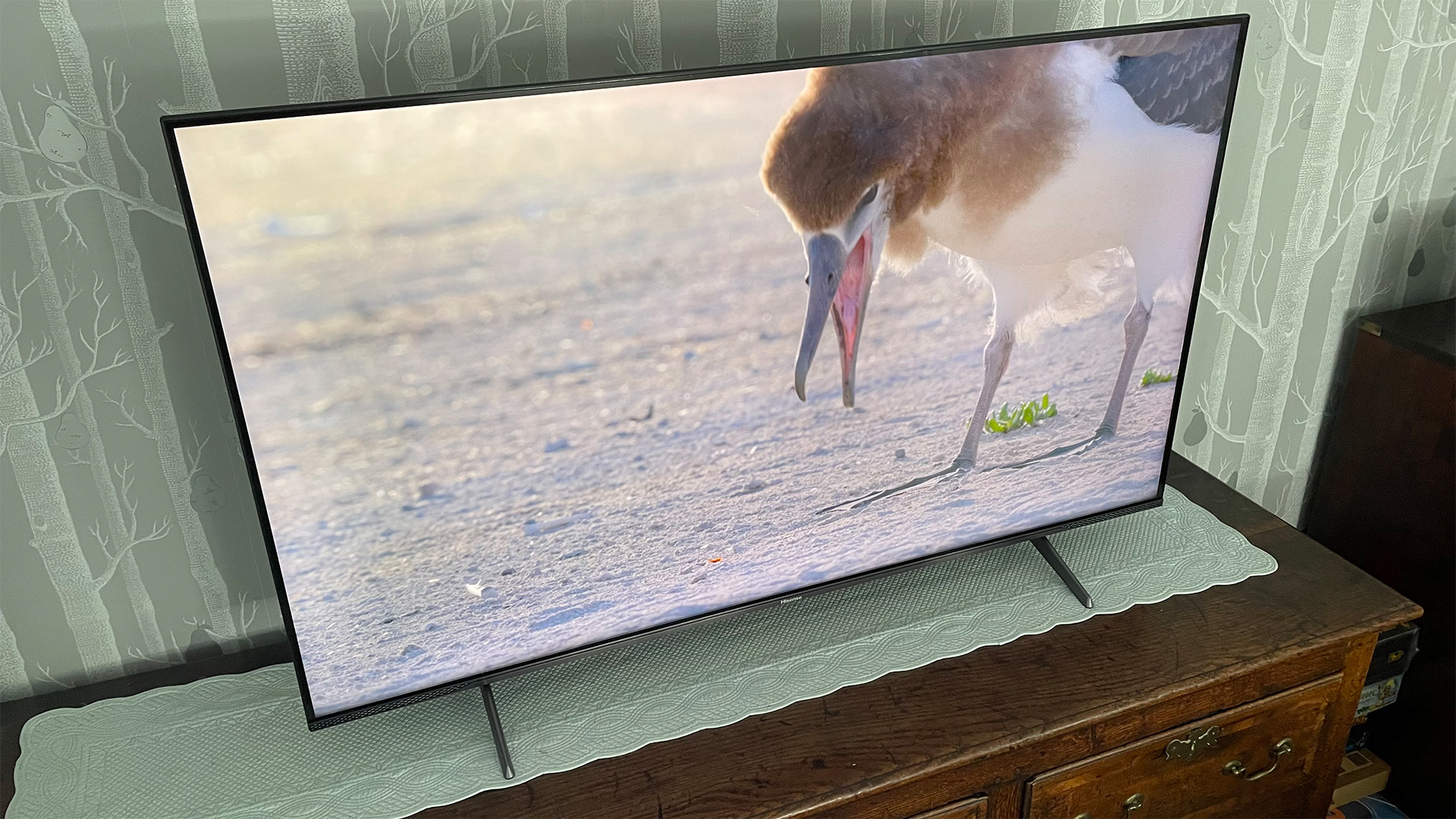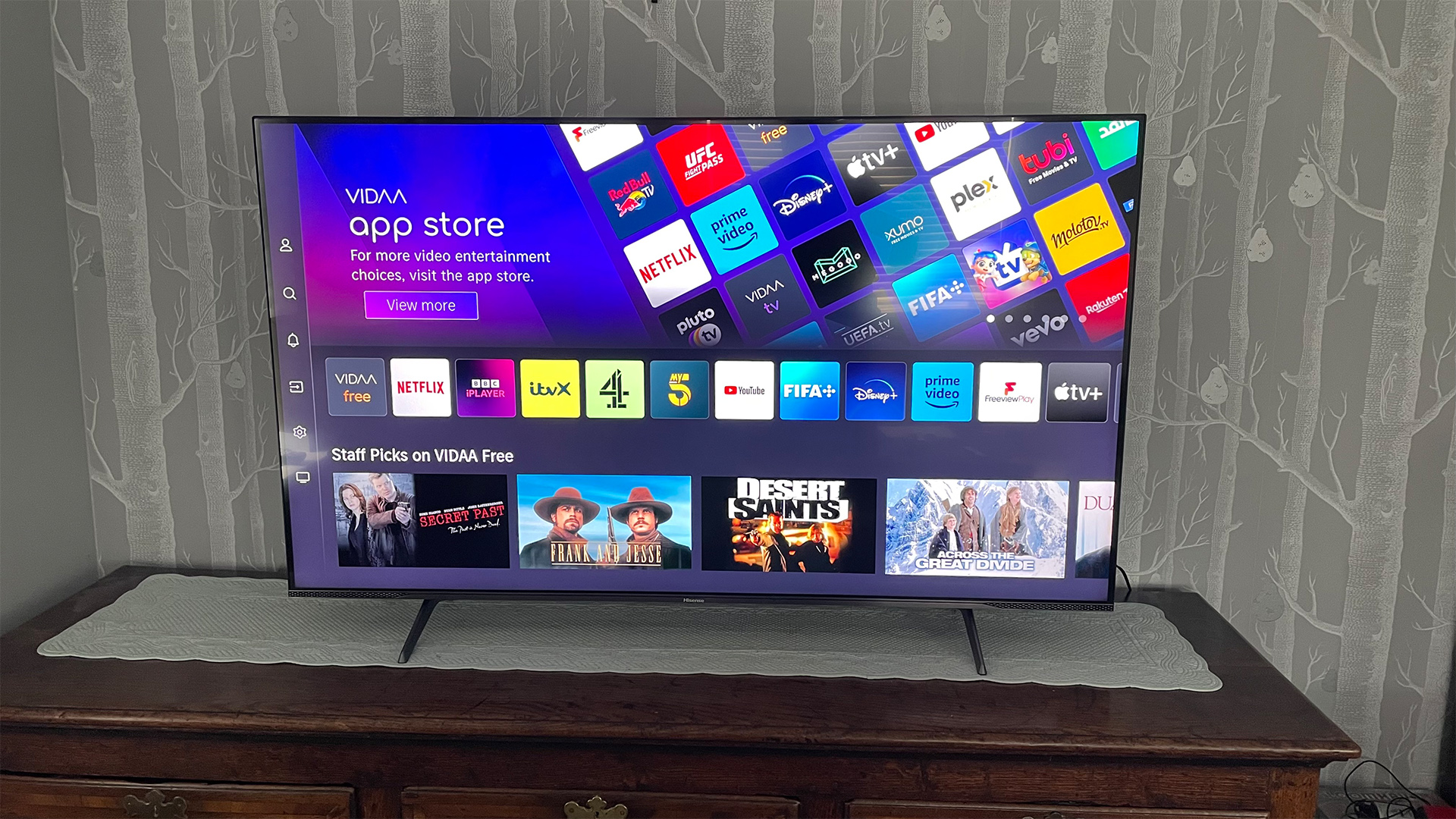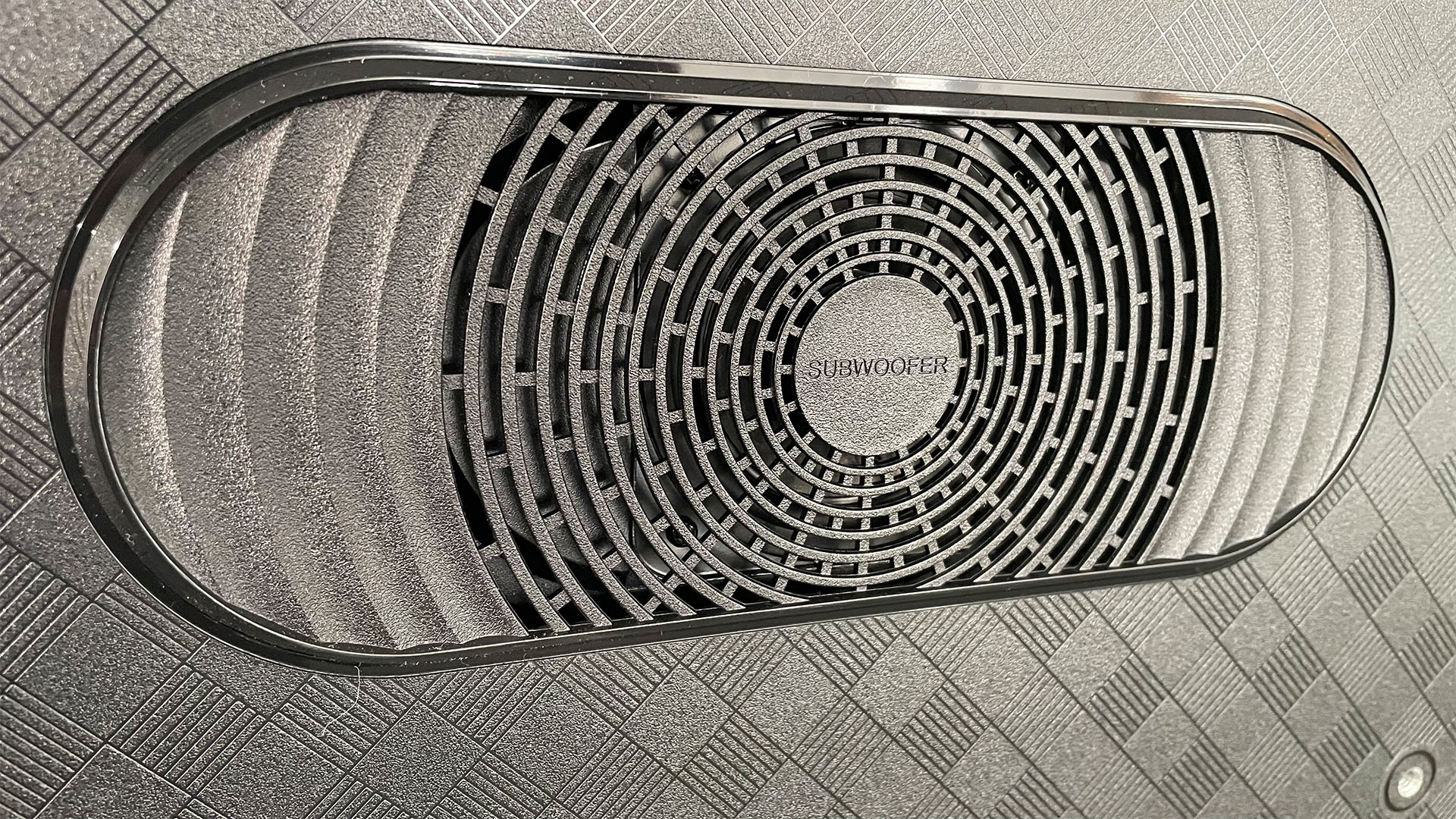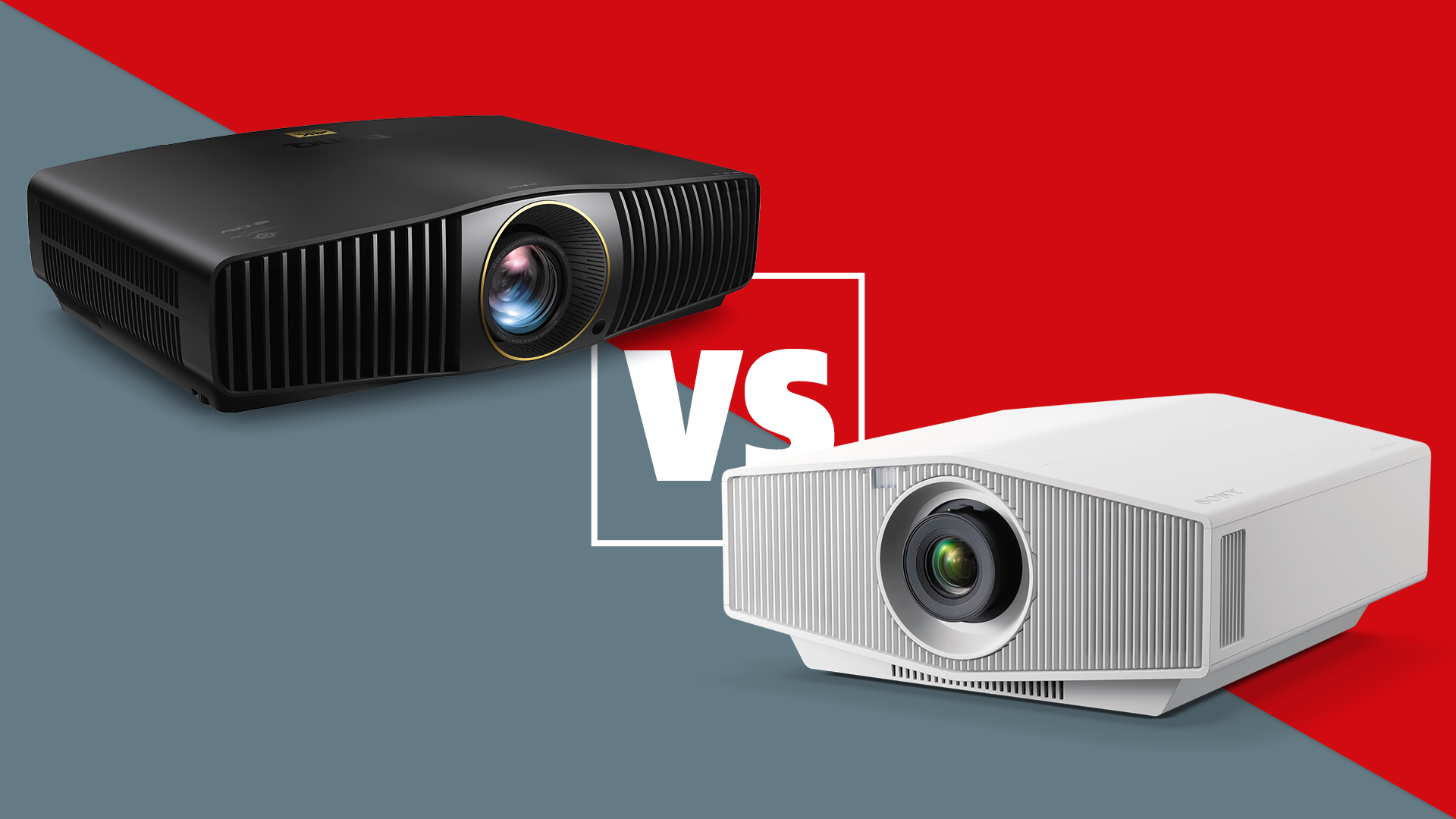What Hi-Fi? Verdict
The Hisense E7K Pro packs plenty of features and good sound for £999 but comes up short in the picture department
Pros
- +
Good gaming features
- +
Fair price for the specification
- +
Dolby Vision and HDR10+
Cons
- -
Some black level issues
- -
Colours can look off
Why you can trust What Hi-Fi?
Hisense has got off to a promising start in 2023, impressing (if not flat out wowing) us with its premium U8K and U7K Mini LED TVs. So hopes are high that it can continue this run of form with the more affordable 55E7K Pro – especially as this 55-inch TV manages to pack in impressively cutting-edge gaming features and unusually comprehensive HDR support despite only costing £999 (around $1250 / AU$1950).
Price

In these days where you can pick up 55-inch TVs for less than £300, the 55E7K Pro’s £999 asking price places it more at the lower end of the mid-range TV market than the upper echelons of the budget TV world. As we’ll see, though, it’s carrying more than enough up-market features to make that price look like great value if its performance is up to scratch.
Confusingly, Hisense is also selling a £699 55E7K without the Pro bit. That model lacks the Pro version’s advanced gaming support (in fact, it only has a 60Hz panel versus the 120Hz panel of the Pro) and uses a much less powerful audio system and an older version of Hisense’s VIDAA smart platform.
There are also 65- and 75-inch E7K Pros available that sell for £1199 and £1499 respectively at the time of writing.
There’s currently no sign of the E7K Pro range in territories beyond Europe, and there was no mention of this range in Hisense’s initial 2023 TV press announcements for the US or Australia.
One final point worth adding here is that the 55-inch version of Hisense’s U7K mini LED range costs £200 more.
Design & build

With its trim, gleaming, faux metallic screen frame, the E7K manages to look like a proper mid-range TV rather than a budget TV with delusions of grandeur. Its simple metal feet look a little basic compared with the rest of the design, perhaps, but if you’re viewing the TV head on they’re so narrow that you hardly notice them, continuing the theme of keeping the hardware to a minimum so you can focus on the TV’s pictures.
The latest hi-fi, home cinema and tech news, reviews, buying advice and deals, direct to your inbox.
The 55E7K Pro’s rear is deeper than most TVs, especially over its bottom third, but enjoys an unusually high degree of styling and sculpting, helping the set maintain a 360-degree elegance. Even though, of course, most people won’t actually see the back of their TVs once they’ve set them up.
The slightly deep rear will also be easy to forgive if, as seems likely, it gives the TV’s 40W 2.1 speaker system more room to breathe than you get with most TVs. You can’t help but notice (it literally says ‘subwoofer’ on its grilled cover) to this end that the speakers include a pretty meaty bass speaker.
Picking the screen up during installation reveals that it’s quite a weighty beast for its money, suggesting Hisense has used some fairly premium components in its build.
The 55E7K Pro’s remote is less glamorous than the TV. It’s fairly lightweight, and doesn’t benefit from the silvery metallic finish you get with the U7K mini LED range’s handset. It does, though, handily carry no less than 12 direct app buttons at its top, covering the likes of Disney+, YouTube, Prime Video, Netflix, Freeview Play and even Apple TV.
Features

There’s a surprising amount to get our teeth into here for a £999 55-inch TV. Starting with the promising fact that the screen is built on a VA rather than IPS panel (hopefully meaning better contrast) but features wide-angle technology to compensate for VA’s usual viewing angle shortcomings. It also boasts an anti-reflection filter to hopefully further bolster its contrast performance.
Colours are provided by a Quantum Dot system that claims to deliver a billion colours, and the panel is 120Hz rather than 60Hz (in fact, 144Hz PC game feeds are supported). You can get the maximum benefit from this panel courtesy of two of its four HDMIs supporting 4K/120Hz feeds from the latest consoles and PC graphics cards.
There’s support for VRR too, including the AMD Freesync Premium format, as well as ALLM switching so the TV will always turn into its fast response Game mode when a game source is detected.
Once in Game mode, the 55E7K Pro turns in a very respectable 13.2ms of input lag with 1080p feeds. This equates to less than half a frame, and only 3-4ms more than the very lowest figures in the TV world. The lag more than halves with 120Hz sources, too.
Impressively the 55E7K Pro supports both the Dolby Vision and HDR10+ versions of high dynamic range video, on top of the basic HDR10 and HLG formats. Handling both of the ‘active’ HDR formats, which benefit from extra scene-by-scene picture data, essentially means that Hisense’s TV will take in the very best version available of any source it’s fed. There’s no forced picking between Dolby Vision or HDR10+ as happens with many other TV brands.
The Dolby Vision and HDR10+ support even extends to the so-called ‘IQ’ and ‘Adaptive’ versions of each format, meaning the formats will intelligently tweak their presentations depending on ambient light conditions.

Screen size 55 inches (also available in 65in, 75in)
Type Quantum Dot LCD
Backlight LED
Resolution 4K
HDR formats HLG, HDR10, HDR10+, Dolby Vision
Operating system Vidaa
HDMI inputs x4 (2 x 48Gbps HDMI 2.1)
Gaming features 4K/120Hz, VRR, ALLM, Dolby Vision game mode
ARC/eARC eARC
Optical output? Yes
Dimensions (hwd, without stand) 71 x 123 x 7.8cm
Gamers, again, will be delighted to hear that as with Hisense’s U8 and U7 Mini LED TVs for 2023, the 55E7K Pro provides a Dolby Vision Gaming mode, and supports Dolby Vision gaming at 4K/120Hz.
And still we’re not done with the gaming goodies, as the 55E7K Pro even gets a dedicated Game Bar menu, providing key information and adjustments specific to gaming. Options include raising the brightness of dark picture areas to make it easier to spot lurking enemies, and multiple aspect ratio support.
An AI-boasting video processing system is on hand to try and permanently optimise picture performance, while an Ultra Motion processor provides a decently diverse range of settings to help take the edge off 24p judder, or make 50/60Hz sport look more fluid and crisp.
The 55E7K Pro’s audio, meanwhile, is provided by a 2.1 speaker system (complete with that hefty rear-mounted subwoofer) pumping out a claimed 40W of audio power. As is becoming increasingly expected in today’s TV world, the audio features include built-in decoding and playback of Dolby Atmos sound – as well as the option to pipe Atmos out losslessly to soundbars or AV receivers using HDMI’s eARC feature.
Rounding out the 55E7K Pro’s promising array of talents is the seventh generation of Hisense’s own VIDAA smart system. This now covers all of the main video streaming services most people will need, with Freeview Play on hand so that UK owners can benefit from the handy umbrella interface it provides for the catch-up services of the country’s main terrestrial broadcasters.
VIDAA’s interface is a little basic in its presentation compared with some rivals, but it’s very easy to use and runs slickly and stably. It’s backed up, too, by built-in support for Amazon Alexa voice control.
Picture

The 55E7K Pro’s picture quality is a frustrating example of a TV that seems to have a few aces up its sleeve but then doesn’t play them out in the optimal way.
To give you some idea of what we’re getting at, the best picture preset on the 55E7K Pro by far is its most extreme one: Dynamic. Hisense really takes the brakes off with this one, unleashing colour vibrancy and brightness – including some decent HDR light peaks for a TV that doesn’t carry any local dimming – that just doesn’t come out with any of the other ‘calmer’, supposedly more balanced picture modes.
The Dynamic mode is sharper than the others out of the box too, giving you a more aggressively 4K experience. Of course, though, as with most TVs’ most extreme, show-off presets, the Dynamic mode has its issues. Colours can become a bit cartoonish and some tones stand out more than others. Greens, in particular, have a tendency to come on too strong. Motion with 24p movies looks too smooth in Dynamic mode, too, and some of the brightest bits of HDR content can look clipped of detail. But at least the dynamic preset proves there really are Quantum Dots inside this TV, unlike the much less saturated other preset options that we would normally look to for the most beguiling and consistent picture quality experiences.
Unexpectedly it’s Dolby Vision sources that most expose the 55E7K Pro’s apparent issues with knowing how best to marshal its picture quality troops. For starters, the set’s Dolby Vision IQ/Bright settings are both too bright, bringing out noise in dark scenes that isn’t supposed to be visible, and giving such content a pronounced grey/green hue. In fact, the screen’s lack of native black level is at its most noticeable with Dolby Vision sources, when normally we’d expect the exact opposite.
There’s some pretty strange colour stuff happening with Dolby Vision Bright in dark scenes, too. In the scene in It Chapter One where Georgie goes for the boat wax in the dark cellar, for instance, skin tones tend to look too pink, and unexpected hues of blue and green suddenly appear in parts of the picture that are supposed to be black.
The overly bright feel to the picture means you can at least make out lots of subtle shadow detail in dark areas, rather than getting the detail ‘crushing’ in dark areas you get with some LCD (and even one or two OLED) TVs. If anything, though, you actually see too much detail in dark areas, as you end up noticing noise that the original master was designed to hide.
The Dolby Vision Dark option is a bit better, with less noise and a little more balance. Skin tones look slightly more detailed and less plasticky, and colour tones enjoy a little more finesse, helping the picture look slightly more three-dimensional and 4K. It still doesn’t look right, though; there’s too much green, skin colouring still doesn’t look natural, there’s more backlight clouding, and black levels look slightly greyer. Also, the weird issue where black colours tend to appear blue or green continues unchecked.
Colours feel slightly desaturated too – as if they’re not quite able to keep up with the high brightness baseline the 55E7K Pro chooses to adopt. Yet as we’ve seen from the Dynamic preset, Hisense’s TV does actually have other colour saturation gears to move through if the Dolby Vision setting had opted to use them.
Shifting our attention to the 55E7K Pro’s handling of regular HDR10 gives us more freedom to both explore its picture settings and get a feel for what Hisense itself makes of HDR footage. The results still look reasonably bright – certainly a good notch brighter than the vast majority of the £500-£700 55-inch HDR club that sit below it. It’s also a little less extreme with its colour inconsistencies during dark scenes and doesn’t tend to look as noisy. Colour tones still feel slightly off, though, there’s too much green again, and we become slightly more aware of a faint inner frame of extraneous light around the picture’s outer edges.
You can get some marginal benefits to the HDR10 picture by tinkering with the provided Dynamic Backlight and Adaptive Contrast controls, with the Medium settings adding a little punch without pushing anything out of kilter. But the differences are small rather than game-changing.
Switching to the Filmmaker Mode preset (designed to meet the requirements of the third-party UHD Alliance) predictably does the best job of getting the colours right, toning down the green and delivering a generally more neutral, balanced look to the colour palette that holds up much better during dark scenes. Unfortunately, though, black levels look much more shallow than they do in the other presets. And they don’t look particularly great in those.
Despite Hisense’s claims of wide viewing angle support for the 55E7K Pro, we still find that contrast reduces and colour errors increase when we watch the TV from any more than around 25 degrees off-axis.
The 55E7K Pro does get some things right on the picture front, of course. As noted before, while its brightness is way down on Hisense’s U7K and, especially, U8K Mini LED models, it’s actually pretty high by the standards of 55-inch TVs at this price. Enough, at any rate, to deliver what feels like a genuine HDR experience in terms of both general extended brightness range and more intense brightness highlights.
There’s enough sharpness – even outside of Dynamic mode – with native 4K content to leave you in no doubt you’re watching a 4K screen, and while upscaling of HD can be a touch rough around the edges, it does keep the 4K feel going.
The screen suppresses reflections quite nicely, while motion, as hinted at earlier, is a big improvement on Hisense’s 2022 efforts. Judder with 24p movie sources can look a touch strong without any motion processing in play, but the Clear and Film motion options both massage away the hardest judder effects without making the image look unnaturally slick or throwing up lots of unwanted side effects.
The 55E7K Pro is also a decent gaming monitor. In fact, it seems more at home with the more ‘definite’ colours and details of high-quality game sources than it is with video, delivering a more consistently vibrant, and actually just more consistent, performance with any type of game at any frame rate. Gaming feels nice and responsive, too.
Sound

Like its pictures, the 55E7K Pro’s audio can be a touch messy. Happily, though, its strengths fairly easily outweigh its weaknesses.
The main stereo speakers are capable of delivering more volume with much more dynamic range and clarity than you would typically expect to find on a mid-range LCD TV. They’re responsive enough to adjust to sudden action or horror movie escalations too, and can go loud without becoming shrill, harsh or excessively coarse.
Vocals are surprisingly clear even when there’s a lot going on behind them, and they tend to sound as if they’re coming from the screen rather than below it or somewhere round the back. There’s a decent sense of detail in the mix too, and Hisense’s audio processing has a fair go at placing these details so that they create a mild sense of Dolby Atmos’s three-dimensional staging. At least to the extent that sound effects seem to exist slightly beyond the screen’s borders.
The subwoofer produces more bass than you typically hear from TVs at the 55E7K Pro’s price level, and is eager to get involved rather than hanging around in the background like the typical TV bass wallflower.
Its input to a movie mix can sound a bit tonally detached, though, rather than slotting itself perfectly onto the bottom end of the main speaker sound, and the film world’s most bombastic basslines can cause a bit of buzzing and distortion. Overall, though, the 55E7K Pro’s sound is very respectable for its money.
Verdict
There’s no faulting the E7K Pro’s ambition. From the aggressive colour potential of its QLED screen and loud, bass-rich sound to its well-organised smarts and comprehensive gaming support, this is a TV that’s out to make a mark and announce Hisense as a serious mid-range competitor.
Unfortunately, the E7K Pro’s picture management system doesn’t manage to marshal all of its ambitions into a consistent enough performance to deliver the all-round quality its ambitions deserve. Which in the end also makes it look less of a bargain than we’d initially hoped.
SCORES
- Picture 3
- Sound 4
- Features 5
MORE:
Read our review of the Hisense U7K
Also consider the Sony X90L
Best 55-inch TVs: smart, 4K, HDR and OLED TVs
John Archer has written about TVs, projectors and other AV gear for, terrifyingly, nearly 30 years. Having started out with a brief but fun stint at Amiga Action magazine and then another brief, rather less fun stint working for Hansard in the Houses Of Parliament, he finally got into writing about AV kit properly at What Video and Home Cinema Choice magazines, eventually becoming Deputy Editor at the latter, before going freelance. As a freelancer John has covered AV technology for just about every tech magazine and website going, including Forbes, T3, TechRadar and Trusted Reviews. When not testing AV gear, John can usually be found gaming far more than is healthy for a middle-aged man, or at the gym trying and failing to make up for the amount of time he spends staring at screens.

